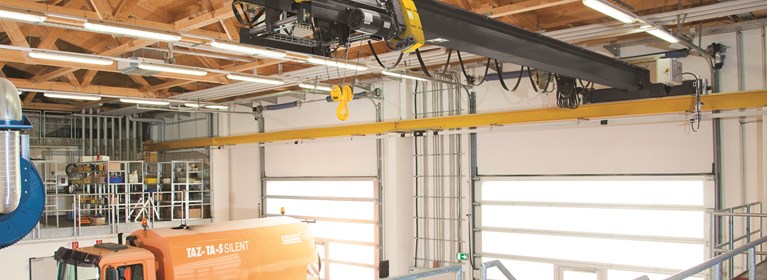
Overhead Crane Types 101
Overhead Crane Types 101: A Complete Guide for Industrial Applications
Crane Systems | How To's | Hoisting & Lifting | By Columbus McKinnon | Jul 16, 2025
Overhead Crane Types 101: A Complete Guide for Industrial Applications
Overhead cranes are a critical part of material handling in manufacturing, steel production, maintenance facilities, and other heavy-duty environments. They allow for efficient and safe lifting of large, heavy loads, improving productivity, reducing manual labor, and minimizing workplace injuries.
This guide outlines the most common types of overhead cranes, their configurations, applications, and how Columbus McKinnon’s trusted crane components and systems can help you build the right solution.
What Is an Overhead Crane?
An overhead crane is a lifting system that moves a load horizontally via a hoist suspended on a bridge that travels along a runway. These cranes are usually fixed in place and integrated into a building’s structure or freestanding support system.
Overhead cranes are typically used to:
- Lift and transport heavy materials between workstations
- Move components during assembly
- Load/unload heavy parts from trucks or racking systems
They are available in several configurations — each suited to different capacities, spaces, and workflows.
Bridge Cranes (Single and Double Girder)
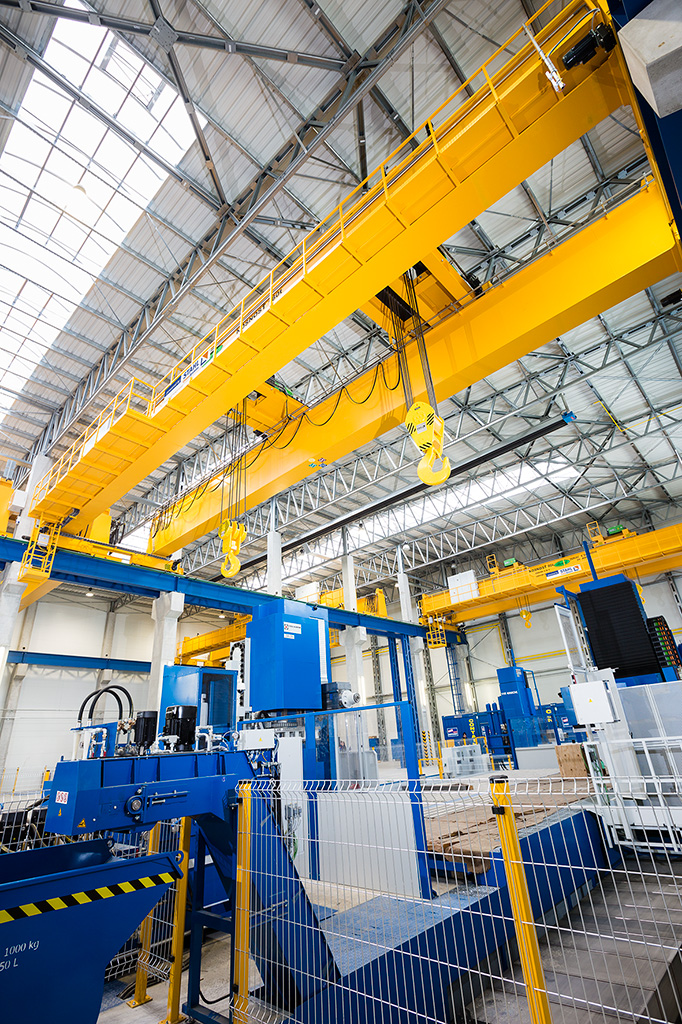 Bridge cranes consist of one or two horizontal girders (bridges) supported by end trucks. The hoist and trolley run along the girder(s) to lift and move the load.
Bridge cranes consist of one or two horizontal girders (bridges) supported by end trucks. The hoist and trolley run along the girder(s) to lift and move the load.
- More cost-effective
- Lower headroom
- Ideal for lighter-duty applications (up to 15 tons)
- Higher load capacities
- Greater hook height
- Suitable for heavy-duty use and longer spans
Common Applications:
Steel fabrication shops, equipment assembly, power plants, and warehouses.
Gantry Cranes
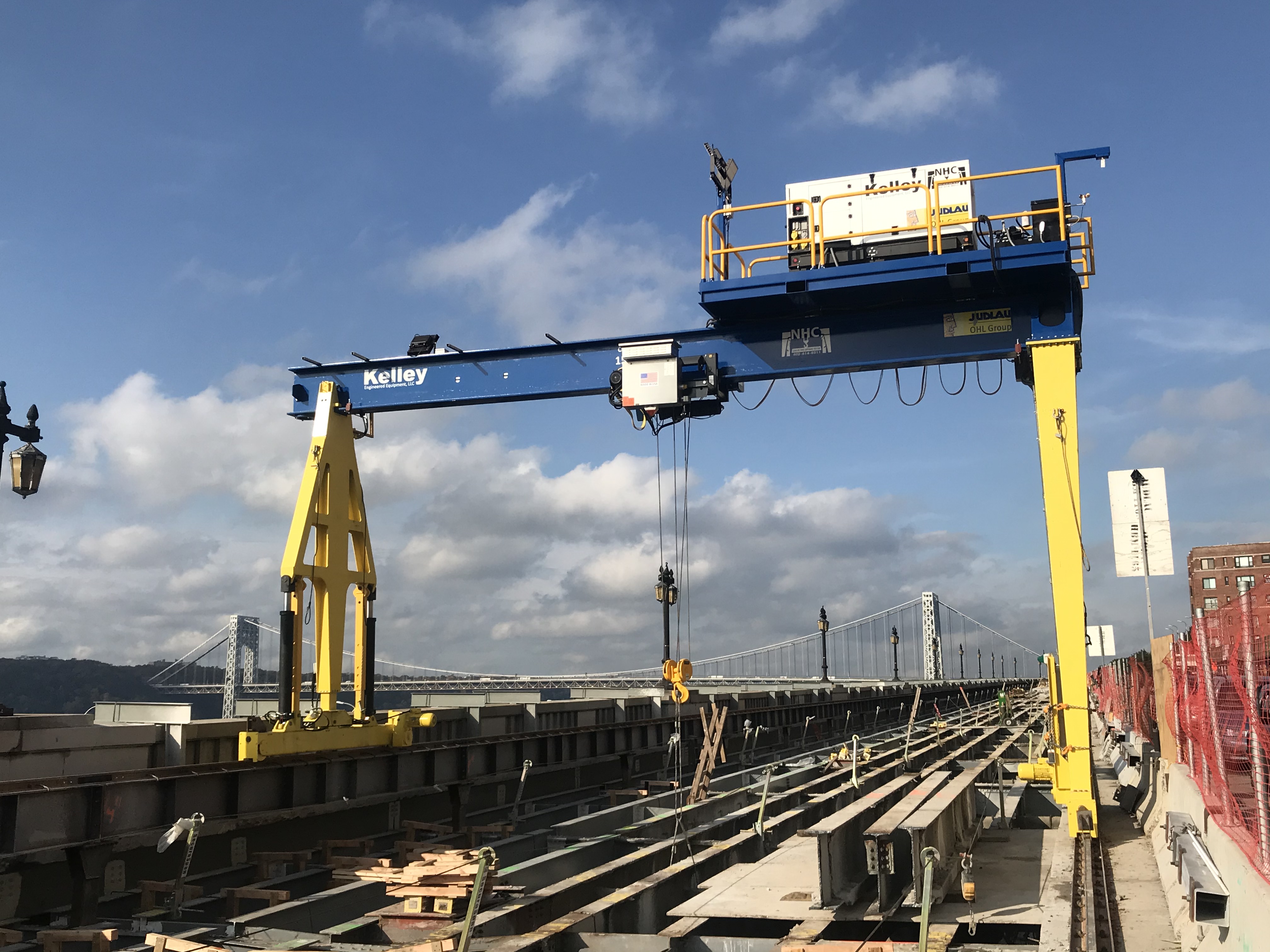 A gantry crane operates similarly to a bridge crane but is supported by freestanding legs. It travels on tracks at ground level or uses casters for portability.
A gantry crane operates similarly to a bridge crane but is supported by freestanding legs. It travels on tracks at ground level or uses casters for portability.
Features:
- No building support structure needed
- Ideal for outdoor use or temporary installations
- Can be rail-mounted or rubber-tired
Common Applications:
Shipyards, railyards, steel service centers, and large construction yards
Monorail Cranes
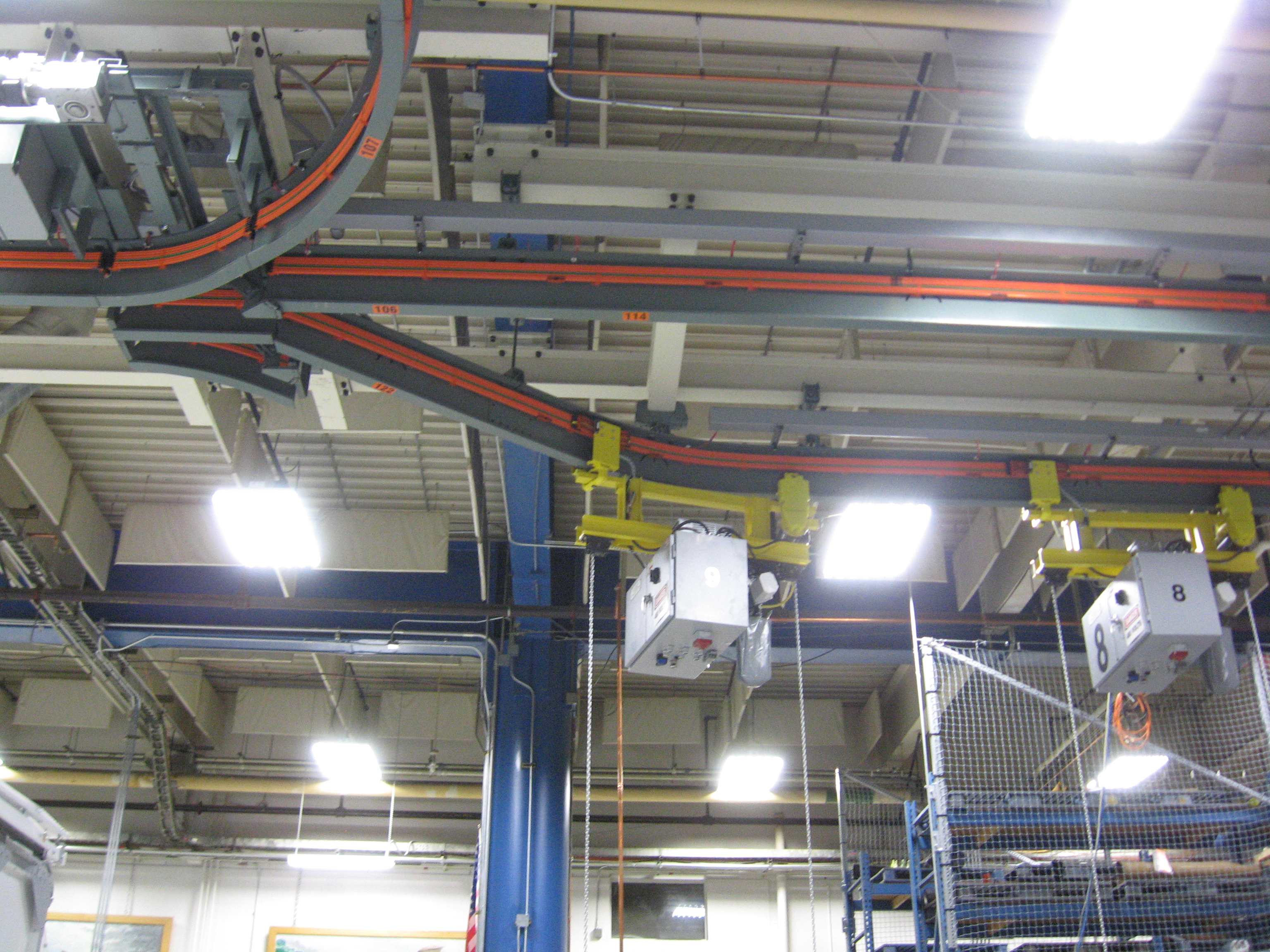 A monorail crane is a simpler lifting system with a hoist that moves along a single overhead beam or track.
A monorail crane is a simpler lifting system with a hoist that moves along a single overhead beam or track.
Benefits:
- Economic and compact
- Ideal for repetitive, linear movements
- Easily integrates with conveyor-style operations
Common Applications:
Paint booths, machining stations, final assembly lines
Workstation Cranes
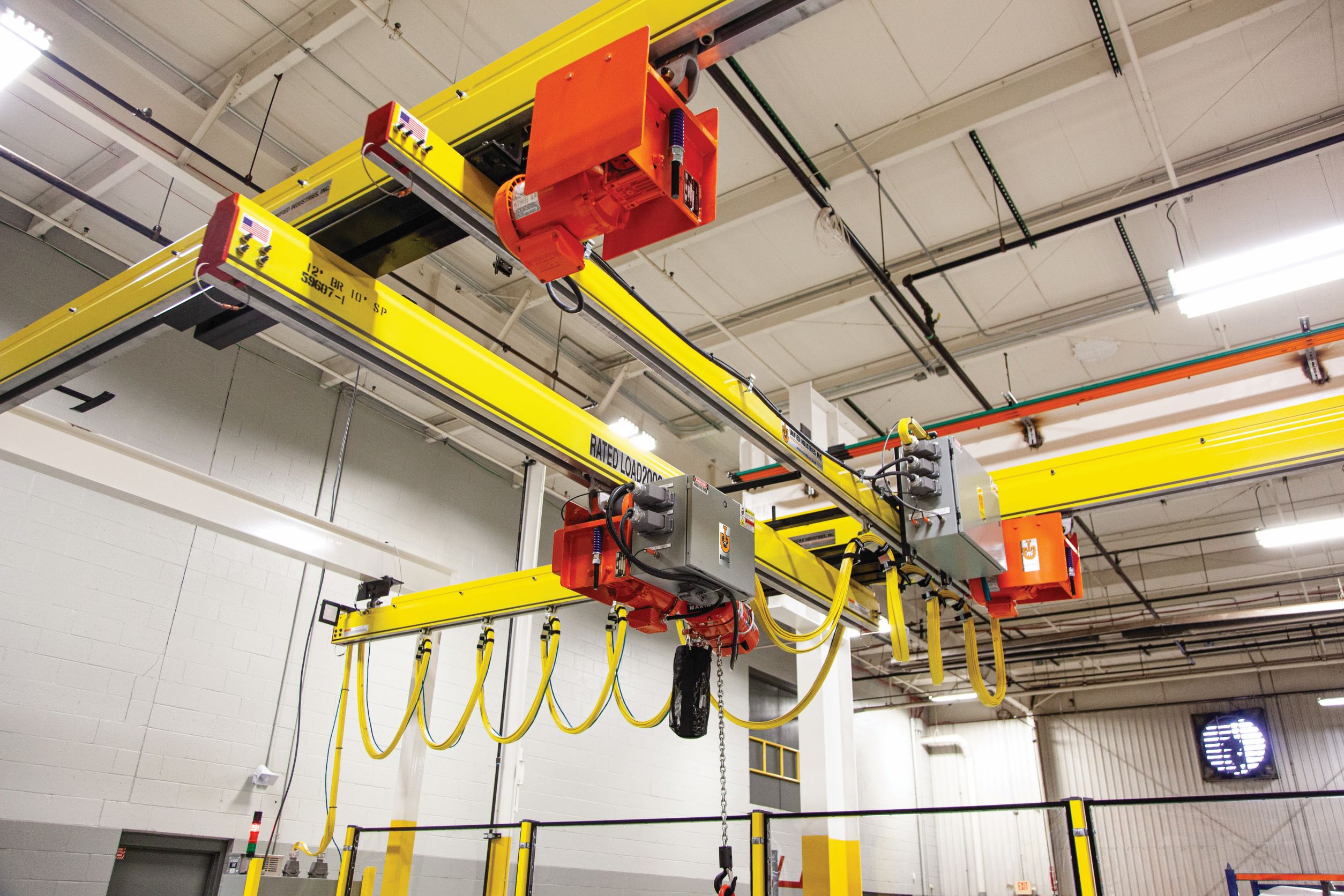 Workstation cranes are ergonomic, modular lifting systems designed to support individual work cells or small teams.
Workstation cranes are ergonomic, modular lifting systems designed to support individual work cells or small teams.
Advantages:
- Light capacity (typically 150 – 2,000 kg)
- Improves productivity and worker safety
- Easy to install, reconfigure, or expand
Common Applications:
Maintenance bays, packaging stations, and light manufacturing
Top Running vs. Under Running Cranes
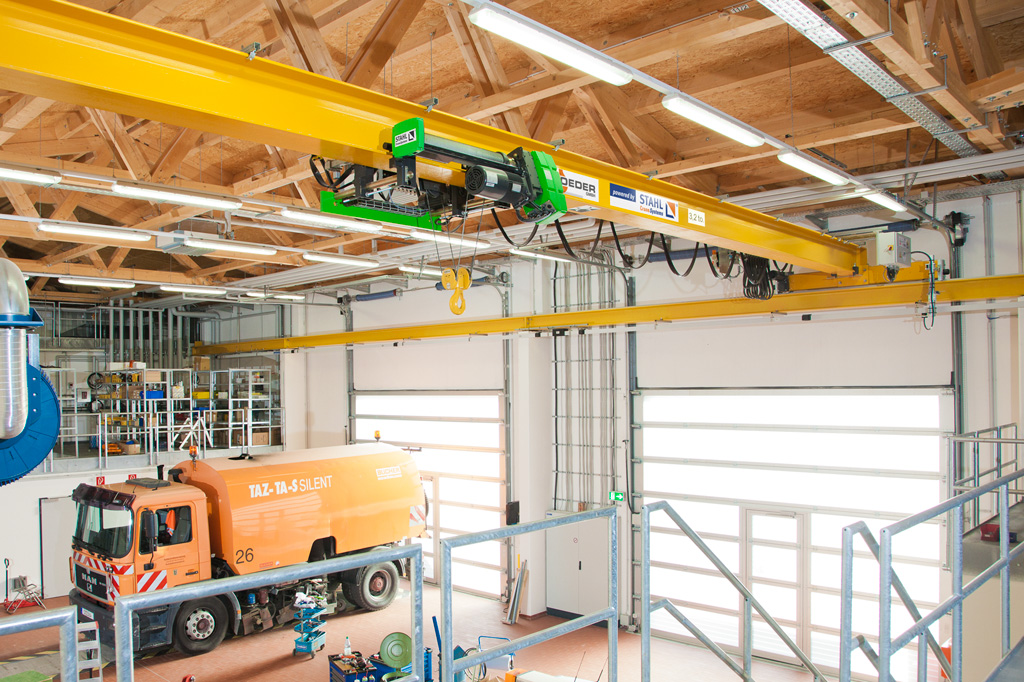 This refers to how the crane interacts with the runway structure.
This refers to how the crane interacts with the runway structure.
Top Running Cranes
- Run on top of the runway beams
- Suitable for high-capacity and long-span applications
- More headroom and hook height
Under Running Cranes
- Suspended below the runway beams
- Great for low-clearance facilities
- Limited to lighter loads and smaller spans
Choosing the Right Overhead Crane for Your Application
When selecting an overhead crane, consider:
- Load Capacity: Total weight of loads and lifting frequency
- Span and Travel: Facility dimensions and load movement needs
- Headroom Constraints: Ceiling height and obstructions
- Building Support: Can your structure handle a crane, or is a freestanding system needed?
- Environment: Indoor vs. outdoor use, temperature, dust, etc.
- Control Systems: Manual, pendant, radio remote, or fully automated
Explore our full range of crane solutions
Working with Columbus McKinnon ensures you get a crane system engineered for your operational needs.
Why Choose Columbus McKinnon?
For over 150 years, Columbus McKinnon has provided innovative, engineered lifting solutions for the world’s most demanding applications.
Whether you’re building a new crane system or upgrading an existing one, our components — from hoists and drives to controls and crane kits — ensure performance, reliability, and compliance with OSHA/ASME standards.
Columbus McKinnon’s experts are ready to help you plan, engineer, and install the perfect crane system for your application.
Related Articles
Having a better understanding of overhead crane classes can help ensure you select the right crane for your application and save you from paying for components you do not need. Two cranes could offer the same lifting capacity, but, if one has a higher crane duty classification, the cost of specialized crane components can add up quick.



 North America - EN
North America - EN



